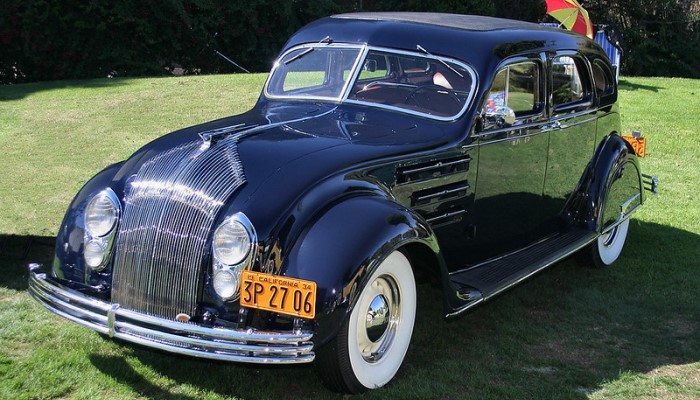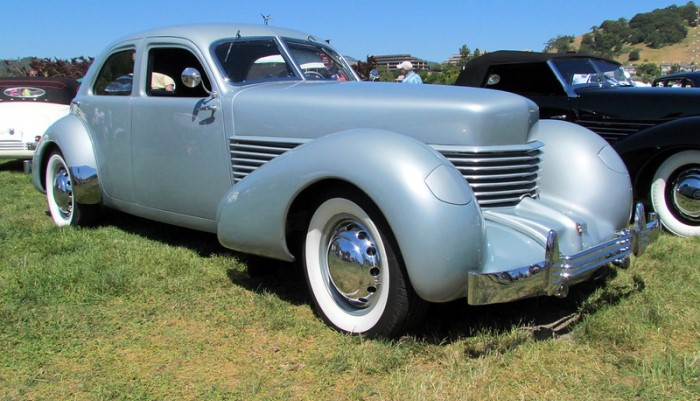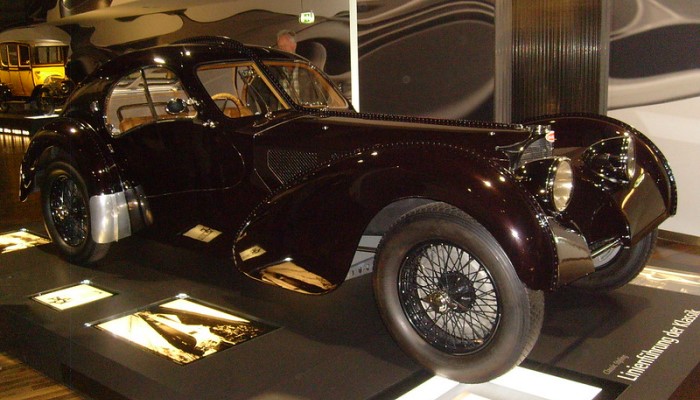Duesenberg SJ
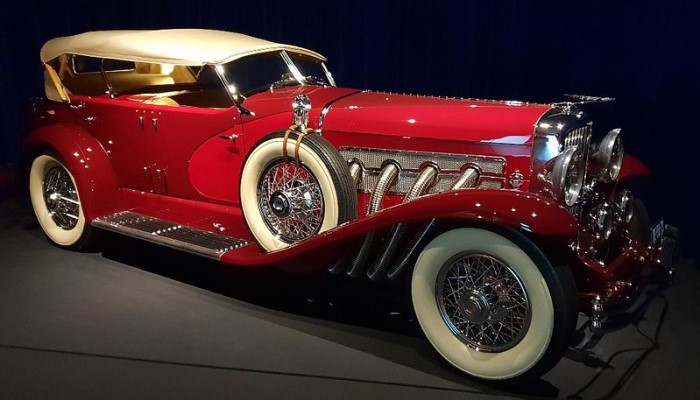
Photo: "Duesenberg Model SJ Lagrande Dual-Cowl Phaeton (1935)" by andreboeni
Automotive Icon That Transcends Time
When Errett Lobban Cord called the Duesenberg J the most beautiful car in the world, it was not an exaggeration. It was superior to competitors from Rolls-Royce, Mercedes-Benz, or Hispano-Suiza in almost all aspects. But how can you describe the Duesenberg SJ, which surpasses anything created before it in terms of power, dynamism, and cost?
It takes 17 seconds for this car to reach a speed of 100 mph (160 kph); not many modern family sedans are capable of such acceleration. All cars with the "SJ" index have a supercharged engine that develops 320 horsepower.
First Appearance
This masterpiece first appeared in 1932, and its creation, as well as the creation of the J model, became possible only thanks to Erret Lobban Cord. He wanted to produce "the best car in the world" in one of the enterprises of his empire.
In fact, the Duesenberg SJ was capable of reaching speeds of 100 mph (160 kph) in second gear. In third gear, you can accelerate up to a maximum of 130 mph (209 kph). Such high-speed performance was achieved after installing a supercharger on the engine, which was first thoroughly tested on many racing cars.
They mounted this silent centrifugal supercharger vertically on the right side of the engine, where they usually locate the intake manifold. Due to the installation of a supercharger, the use of the previous exhaust system became impossible. Four corrugated pipes extending through the right side of the hood replaced it.
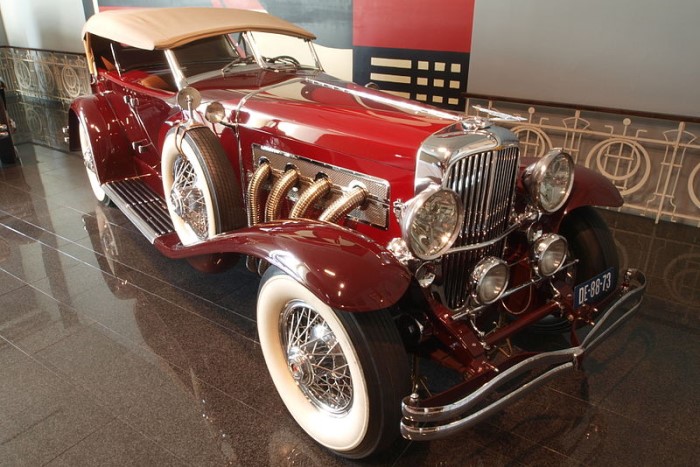
The SJ, created by Fred Duesenberg, was an expression of his taste and engineering skills, but the Duesenberg SJ owes its fame to superchargers.
The chassis, with its powerful six-member ladder frame and axle suspension on semi-elliptical springs, was fairly conventional, but the brake design was interesting. The huge vacuum-assisted brake drums were identical on the front and rear wheels.
A handbrake with a chrome handle acted on the driveshaft. It could also be used in the event of failure of the main brakes, the hydraulic drive of which had shut-off valves in the brake cylinders to shut off the line in the event of damage to the brake cylinder of any of the wheels. On the dashboard, there were instruments for monitoring the operation of the braking system.
The heart of the car was, of course, the excellent 420ci (6.9-liter) inline-eight engine with double overhead camshafts and four valves per cylinder. As early as 1928, Fred Duesenberg adopted an engine design that most other prestige car manufacturers would not use until 60 years later.
In just four years (1932–1935), 36 Duesenberg SJs were built, and almost all of them survive. But among the dead cars, there is one that may have changed the company's fate. This is the Duesenberg SJ that Frederick Samuel Duesenberg crashed in 1932.
The SJ in Today's Market
Today, the Duesenberg SJ is considered a highly sought-after collector's car. Its rarity, exclusivity, and enduring appeal have ensured that values have remained consistently high.
According to classic car market analysts, the average price for a Duesenberg SJ in good condition currently ranges from $700,000 to $3 million. However, exceptional examples in pristine condition can fetch even higher prices.
The market for Duesenbergs, including the SJ, has been buoyed by a growing interest in pre-war classics among high-net-worth individuals and collectors. The cars are often showcased at prestigious concours d'elegance and vintage motor racing events around the world.
Why is the Duesy SJ Still Attractive?
There are several reasons why the Duesenberg SJ continues to captivate car enthusiasts today.
Classic Design: The SJ's flowing body lines and graceful proportions have become synonymous with automotive excellence. Its timeless design evokes an era of elegance and sophistication.
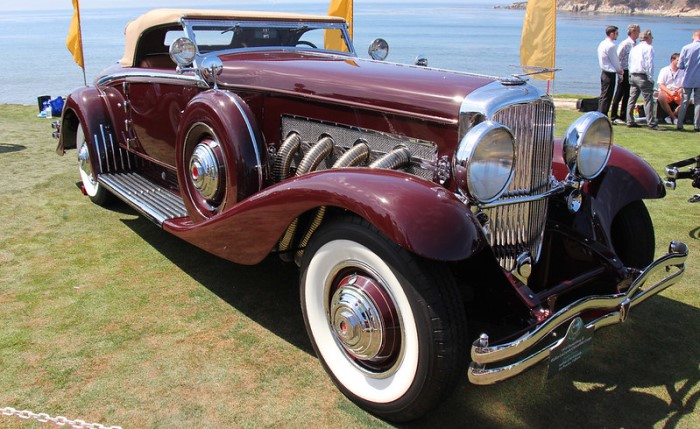
Photo: "1934 Duesenberg SJ Convertible Coupe (21550956279)" by Sicnag
Unparalleled Performance: The SJ's mighty straight-eight engine delivered blistering acceleration and a top speed of over 125 miles per hour, making it one of the fastest cars of its time.
Exquisite Craftsmanship: Duesenberg was renowned for its meticulous craftsmanship and attention to detail. Each SJ was hand-assembled and finished to the highest standards, resulting in exceptional quality and durability.
Modern Market Considerations
While the Duesenberg SJ remains a desirable collector's car, it is important to note that its acquisition and ownership come with certain considerations.
Rarity and Availability: Only a limited number of SJs were produced, making them extremely rare. Finding a good example on the market can be challenging.
Maintenance and Restoration: The SJ's complexity and historical value necessitate specialized knowledge and resources for maintenance and restoration.
Insurance and Storage: Insuring and storing a vintage car like the SJ requires specialized policies and facilities to protect its value and condition.
Conclusion
The Duesenberg SJ is an automotive icon that transcends time. Its combination of classic design, unparalleled performance, and exquisite craftsmanship continues to enamor car enthusiasts and collectors today.
While its acquisition and ownership come with unique considerations, the SJ remains a symbol of the Golden Age of motoring and a testament to the enduring legacy of the Duesenberg name.

Unique Car Zone Team
A group of several fans of everything that moves on four wheels, a few article creators, a couple of marketing strategists, designers, web developers, and lots of coffee.




